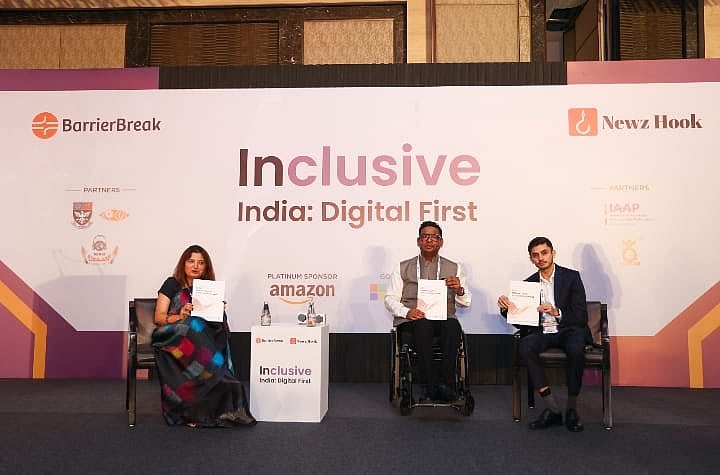Digital Spaces Remain Inaccessible For People With Disabilities, National Study Reveals
Entertainment platforms recorded the highest error rate at 285.2, followed by Travel and Tourism (144.3) and E-commerce (121.5). Despite the rapid expansion of India’s digital economy, foundational accessibility features remain absent across many high-traffic platforms.

Digital Spaces Remain Inaccessible For People With Disabilities, National Study Reveals |
Mumbai: A new national study has revealed that a vast section of India’s digital ecosystem still excludes users with visual, hearing, motor, or cognitive disabilities. The BB100 State of Digital Accessibility in India 2025 report, which analysed 100 of the country’s most visited websites, found an average of 116 accessibility errors per homepage.
Entertainment, Travel, and E-commerce Lead in Accessibility Gaps
Entertainment platforms recorded the highest error rate at 285.2, followed by Travel and Tourism (144.3) and E-commerce (121.5). Despite the rapid expansion of India’s digital economy, foundational accessibility features remain absent across many high-traffic platforms.
Study Conducted by BarrierBreak and NCPEDP
Conducted by BarrierBreak in partnership with the National Centre for Promotion of Employment for Disabled People (NCPEDP), the study exposes widespread non-compliance with basic accessibility norms—even as India has more than 63 million people with disabilities, according to NFHS-5.
The report notes that 64% of the identified errors were at the most basic Level A standard, reflecting fundamental design and navigation failures. Poor colour contrast accounted for the largest share of errors, followed by unclear links, missing keyboard operability, incorrect ARIA markup, and insufficient image descriptions.
While Government and Healthcare websites have reduced their average error count compared to last year, they still fall short of what an inclusive digital environment demands. Consumer-facing sectors, particularly Entertainment and E-commerce, continue to struggle with consistency in implementing accessibility guidelines.
‘Digital Access Is a Fundamental Right,’ Says NCPEDP Director
Arman Ali, Executive Director of NCPEDP, said the findings highlight the continued exclusion faced by millions of Indians from everyday digital experiences and essential online services.
He emphasised that the Supreme Court has affirmed digital access as a fundamental right, noting that inaccessible platforms not only violate this right but also cause economic losses through reduced engagement and untapped revenue.
Ali urged organisations to integrate accessibility from the very beginning of the design process rather than treating it as an afterthought.
‘Accessibility Is Good Business, Not Charity,’ Says BarrierBreak CEO
Shilpi Kapoor, Founder and CEO of BarrierBreak, said disability inclusion must move beyond charity-driven narratives. She stressed that accessible design leads to better products for all users and opens opportunities to serve a large, underserved customer base.
ALSO READ
Kapoor added that embedding accessibility throughout the digital transformation journey instead of applying fixes after launch strengthens usability and expands market potential.
Report Released at Inclusive India 2025 Event
The report was released at the 4th edition of Inclusive India: Digital First on November 10 at JW Marriott Sahar, Mumbai. It evaluates websites across major sectors using BarrierBreak’s A11yInspect tool and WCAG 2.2 Level AA standards.
RECENT STORIES
-
-
-
-
-